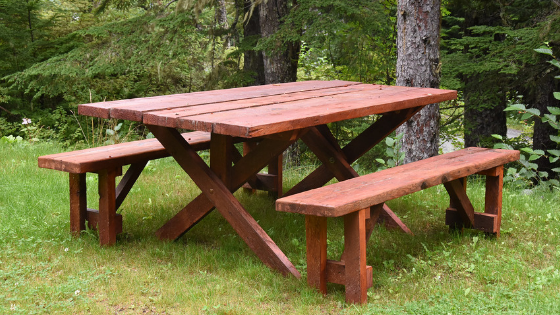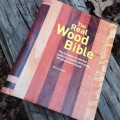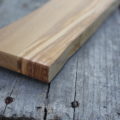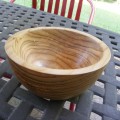I’ve been thinking about making a picnic table for a while. I’ve always wondered: Is pressure treated wood safe for picnic tables? Or other outdoor furniture? So I did a little research and here’s what I found.
The short answer: It depends. If you’re using older treated lumber that contains Chromated Copper Arsenate (CCA) then those are more toxic than modern-day treated boards. I decided to email the EPA and they replied back saying that most boards today that are treated with Alkaline Copper Quatemary (ACQ) are allowed to be used for picnic tables, benches, and other outdoor structures.
If in doubt, just email the EPA
I recently emailed the EPA to ask if treated lumber can be used for picnic tables. It took about 5 days to get a reply, but here’s exactly what they said in the email.
ACQ was registered as an alternative to older, riskier wood preservatives. Lumber that has been treated with ACQ consistent with the EPA labeling may be used to make picnic tables, benches, and other outdoor structures.
Notice the little caveat they give in this email: “consistent with the EPA labeling.”
If in doubt, you can also email the EPA if you have specific questions. The email address is: pesticidequestions@epa.gov
Based on the research I’ve done, you shouldn’t ever prepare food on treated lumber. So I would not recommend using treated lumber for things like kitchen counters or cutting boards. You also don’t want drinking water exposed to treated lumber and you don’t want to use PT lumber for food storage applications. To me, this is just common sense.
When I was a kid, I remember mom always placed a table cloth over any picnic tables we used (she probably wasn’t thinking CCA). And, as a general rule, you’re probably not going to be preparing or processing food on the surface of a picnic table. I still eat my food on a plate — LOL.
What is treated lumber?
It’s lumber that’s taken through a chemical and pressurized process to deeply infuse the wood preservatives throughout the wood.
The wood preservative will help repel insects and decay for the long-term but not forever. Treated lumber has been around now for over 60 years.
The wood that is normally used is softwood and typically yellow southern pine. Other parts of the country, may use other species of wood.
Of course, pressure-treated wood is intended for outdoor use. You will see different kinds of ratings on PT wood. Some are rated “Above Ground Use” and some are rated “Ground Contact.”
There’s also a number associated with the concentration of chemicals in the wood. The higher the number, the higher the concentration of chemicals. So, you would expect PT wood rated as “Ground Contact” to have a higher concentration of wood preservative chemicals.
No, treated lumber is not any more stronger than non-treated lumber. It just resists decay longer.
How long will treated lumber last?
Depending on the claims you read, treated pine usually lasts for 15 to 20 years. But I’ve seen treated wood go longer than this. It probably will depend on the environment and if you’ve applied additional wood preservatives to fend off weathering. I’d be willing to bet that wood in contact with the ground will not stay as well preserved. Okay — that was a Captain Obvious statement.
Some background information on treated lumber
In 2008, the EPA discovered that 3 wood preservatives needed to be reregistered. These were:
- Chromated Arsenals
- Pentachlorophenol (PCP)
- Creosote
It was determined that all 3 posed some risk concerns associated with occupational exposure. PCP and Creosote also posed some concerns for the environment.
Beginning on December 31, 2003 CCA manufactures cut out the use of CCA wood treatment for residential applications. This included decks and children playsets.
The EPA has approved several newer wood preservatives for residential use that are deemed to have lower toxicity. Here is the list of a few:
- ACQ.
- Borates.
- Copper azole.
- Copper naphthenate.
- Copper-HDO (Bis-(Ncyclohexyldiazeniumdioxy-copper)).
- Polymeric betaine.
ACQ or alkaline copper quaternary is probably the most widely used treatment for residential applications.
Like the older wood preservatives, the EPA has stated that these newer ones will also go through a review process. So, to me, that sorta raises the question that there may still be some uncertainty.
So bottom line — don’t use treated lumber for preparing food and try to limit your exposure to treated lumber. I also don’t recommend it for bird houses or bee hives. We’ll talk later about some best practices for working with treated lumber.
Treated lumber definitely has its place. I’ve used it a lot for fence posts and other fence structures. I’d recommend you use this anytime you stick wood in the ground or in concrete.
How do I know what wood-preservative chemicals are in the wood I’m buying?
Best bet is to just talk to the supplier or home center. There will probably be labels or stamps on the wood, but you may need some help interpreting what they mean. As I’ve already stated, there are different grades of PT lumber out there depending on how you’re going to use it.
What’s the big deal about CCA?
Studies have shown that the arsenic in CCA has been linked to certain types of cancers. Apparently, this component of CCA can be absorbed into the body. And it’s known that very small amounts of CCA can leach out of the wood, potentially coming in contact with humans.
How big of a threat is this, I don’t know. It may be minuscule. The human body is a complex machine, and we all seem to respond differently to elements in the environment.
What if I have existing structures that are treated with CCA?
So, you may be thinking — should I dispose of any structures that are treated with CCA? The EPA has set no mandates for removing or dismantling structures currently treated with CCA.
Dismantling a deck containing CCA boards can be a huge (and costly) undertaking. And if you do the demolition, then you’re probably exposing yourself even more to the chemicals.
On the other hand a picnic table or lawn chair would be relatively easy to carry off to the landfill. I don’t think I would worry about fence posts. If you use CCA treated wood for raised gardens, then you might want to put in a plastic liner around the inside perimeter.
According to this Consumer Product Safety Commission brochure: “Regular application of an oil- or water-based penetrating coating (stains, sealants) to CCA-treated wood structures may reduce potential exposure to chemical residues.”
I’m no expert, but it seems like you can reduce the risks when it comes to decks. And just how much are you going to be in contact with a deck, unless you walk bare footed. Splinters might be a higher risk.
Playsets could be another story, since kids will have more frequent contact with the wood. You might be able to apply more sealants to reduce the risk. So, do some additional research and use your best judgement.
What are some alternatives to treated lumber?
Woods like western cedar, redwood, cypress or white oak are great non-treated alternatives to pressure-treated (PT) wood. These woods have their own properties that make them naturally resistant to insects and decay. The heartwood (inner portion of tree) of these woods is even more rot-resistant than the sapwood (outer portion of tree). However, these woods may come with a higher price tag.
If you’re building a deck, there are now many synthetic or composite materials available. Again, this may come with a price tag.
You can use woods like pine and then stain them and finish them in such a way to preserve them. I have used pine for outdoor benches and chairs. I apply a couple coats of stain and then about 3 coats of Spar Urethane. This has worked pretty well, but won’t preserve the wood indefinitely. I probably wouldn’t recommend doing this for fence posts or a deck.
Another tip I’ve learned for untreated wood used for outdoor furniture: Use wood glue to seal parts of the furniture that come in direct contact with the ground. Usually that’s going to be end grain so it will wick up the glue as you apply it. Just keep in mind that glue may make it harder to accept stain, but you won’t notice this since it will be covered up.
Can I paint treated lumber?
The answer is — yes. However, you need to allow the wood an ample amount of time to dry. Have you noticed when buying pressure treated wood from the home center that it usually feels wet? That’s because of the process used to infuse the preservative deep into the wood. Water is used in this process. This water content also makes treated wood heavier than untreated wood.
It can take treated lumber several days (more like weeks) to dry. You may also notice some cracking and warping as it dries. In my opinion, painting treated lumber is problematic, but it can be done.
How can you tell when the wood is dry enough to paint? Sprinkle a few drops of water on the surface. If the water soaks into the wood, that indicates that it’s ready to paint. If the water beads up, that means it’s still too wet.
Make sure you use paints and stains that are formulated for use on treated lumber.
If you DON’T decide to paint, it’s still a good idea to apply some kind of water-repellant sealant or wood preservative to help the PT wood endure natural weathering. Remember, although pressure-treated wood will resist decay longer term, it will will still weather since it’s exposed to the sun and the elements.
Depending on who manufactures the lumber, some brands may already be putting water-repellant sealer in the wood. So, always ask your supplier about how the wood’s been treated.
Best practices for working with treated lumber
Make sure you use work gloves, approved eye protection and an approved dust mask when working with treated lumber. But you should use these even with untreated lumber.
It’s a good practice to wash gloves and clothes that come into contact with treated lumber. Wash your hands as well.
Also, don’t cut or sand treated lumber indoors.
Treated wood shouldn’t be used indoors. Why would you want to do this?
Don’t ever burn treated lumber because this releases more toxins into the air. Sawdust and scrap treated lumber should be disposed of in a landfill.
It’s recommended that you use stainless steel or hot-dipped galvanized wood screws with treated lumber. Regular wood screws will react with chemicals in the treated lumber and eventually corrode.
It’s a good idea to drill pilot holes for wood screws, especially near the ends of a board.
What about glueing PT lumber?
Polyurethane Glue (like Gorilla Glue) is a great choice for treated lumber. Remember, how we said PT wood tends to be damp. Polyurethane glue actually cures in the presence of moisture. This glue will foam up and leave a little residue that will need to be cleaned up later.
Is pressure treated wood safe to use for raised gardens?
In some ways, we’ve probably already answered this. If the wood is CCA, I’d recommend sealing it and also place a plastic liner as a barrier between the wood and the soil.
I don’t think it’s as much of a concern with the newer EPA-approved preservatives.
What would I use? For peace of mind, I would use redwood or cedar instead. I know it’s a little more expensive, but I’m not worried about additional cost for a long-term investment.
What about using treated lumber for a dog house?
I couldn’t find anything really specific in my research. However, the EPA literature also mentions pets at the same time it mentions humans. We all know how animals like to gnaw on things and lick things, so I believe I would take some precautions here.
Again, think about using other non-treated alternatives like redwood maybe. I do know that for bird houses, cedar is used frequently.
Final Thoughts
If you have existing structures made of CCA, I’d recommend following the EPA guidelines to help reduce any leaching effects of the chemical. Even if there is leaching, it seems like this is a very small amount.
It sounds like the newer wood preservatives are much less toxic than the older varieties. But they too are continuing to be evaluated.
I personally tend to stay away from treated lumber (unless it’s for something like fence posts or a mail box post that needs to be planted in the ground). I think it’s just my aversion to being exposed to more chemicals, and don’t we have plenty of that exposure already in our lives.
I hope this article has been helpful. I sure have learned a lot more about treated lumber by doing the research. I don’t claim to be a scientist or expert on treated wood. Much of what’s been stated here was from information I’ve found from EPA sources and other articles.
If you have further questions about pressure-treated lumber and its uses, I’d recommend you talk to the supplier of the lumber and you could reach out to the EPA via phone or email.
Please leave a comment and share any additional tips you may have.
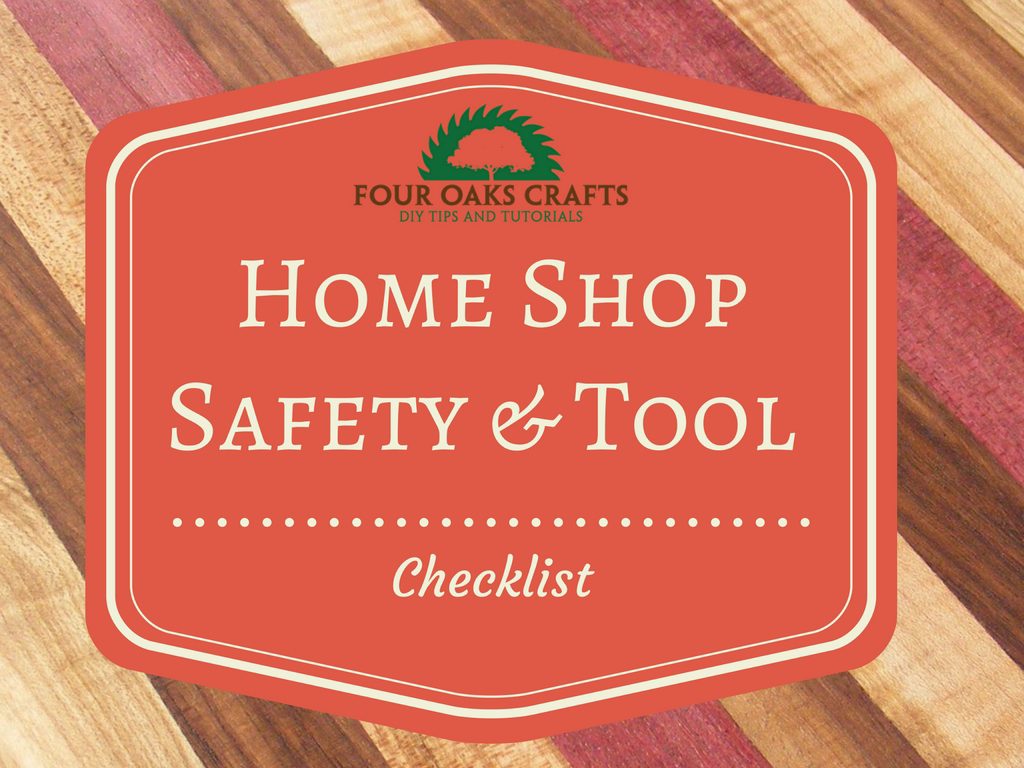
Are you starting up a new shop? Want to work safer in your shop? To help you answer these questions I've put together a 2-part checklist -- Home Shop Safety & Tool Checklist.
I will also send you updates of my latest woodworking and DIY projects. You can get all this by subscribing to my free email newsletter.
